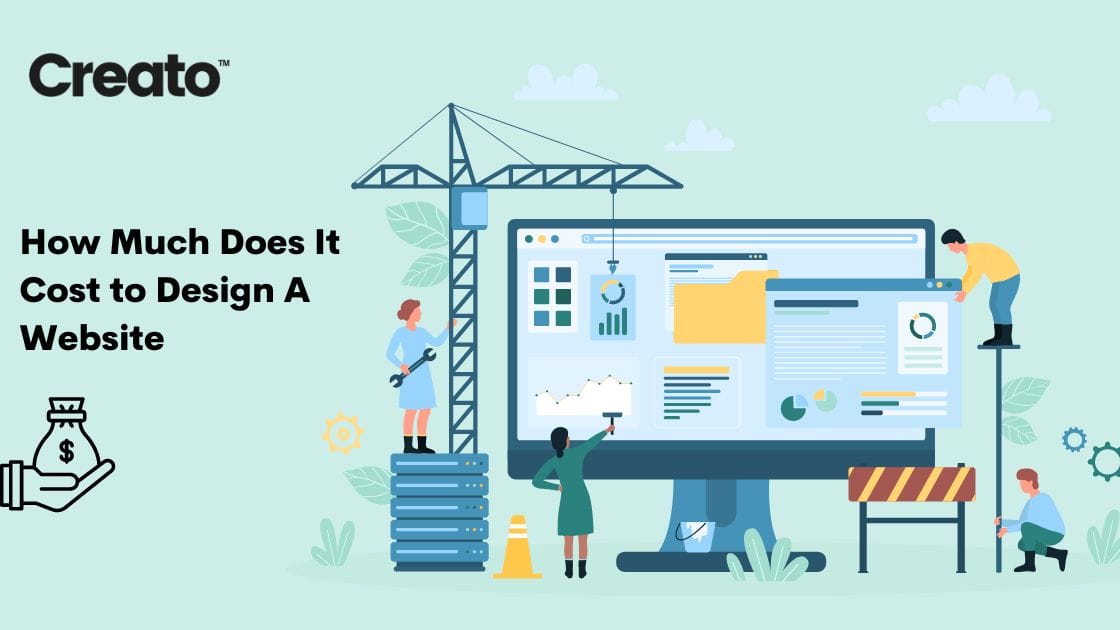


A website is more than just an online identity for businesses; it’s a vital tool for engaging with customers, building credibility, and driving growth. However, the path to establishing a robust online presence begins with a pivotal question that many Australian business owners face: “How much does it cost to design a website?” This question is paramount as the investment in a website encompasses not only its initial design and development but also ongoing maintenance, updates, and content creation. With a focus on the Australian market, this expanded article aims to demystify the costs involved in website design, offering insights to help you efficiently plan and budget for your digital storefront.

The cost of design a website in Australia spans a broad spectrum. At one end, there are basic, do-it-yourself (DIY) websites that might cost a few hundred dollars, using platforms like Wix or Squarespace. On the other, custom-designed platforms with advanced functionalities can run into tens of thousands of dollars. This variance is attributed to the diverse needs across businesses and the level of complexity and functionality required.
For instance, a simple blog or an informational site serving as a digital brochure for your services would naturally incur less cost than an interactive, custom E-commerce Web Design online store that needs to manage products, handle customer transactions securely, and provide a personalised shopping experience.

Design Complexity and Functionality: website that adheres to solid website design principles, incorporating brand-specific elements, interactive features, and custom animations demands a considerable amount of design and development time. Moreover, websites integrated with third-party services for functionalities like appointment booking, live chat, or customer relationship management (CRM) systems require sophisticated backend development, significantly impacting the overall cost.
Pre-designed Templates vs. Custom Design: Using pre-designed templates is usually more cost-effective but offers less uniqueness and flexibility. Custom web designs are more expensive but allow for a unique look and functionalities tailored to specific business needs.
Open-Source vs. Proprietary Systems: Open-source CMS platforms, like those used for WordPress web design can be more cost-effective due to their no-cost licensing and extensive plugin ecosystem. Proprietary systems might offer specialised functionalities but come with licensing fees, increasing overall costs.
Mobile Design Considerations: With a significant portion of web traffic coming from mobile devices, a website must be optimised for mobile use. Designing for various screen sizes can add complexity and cost but is essential for user engagement and SEO.
Use of Animations and Interactive Features: Websites featuring advanced animations, video backgrounds, or interactive elements require more sophisticated design and coding, increasing costs.
Product Management Systems: For e-commerce sites, the complexity of the product management system, payment processing integration, security features, and customer management tools can greatly affect the cost.
Ongoing Support: The level of ongoing support, including troubleshooting, updates, and security monitoring, can influence maintenance costs.

Beyond the initial design and development, websites incur ongoing and sometimes overlooked costs essential for their operation and success:
Domain Name and Hosting: These are the necessities for any website. Annual costs for domain names vary based on the domain extension (.com, .com.au, etc.), with prices ranging from $10 to $50. Hosting services can vary widely, from shared hosting plans at around $60 per year to dedicated hosting services costing upwards of $600 annually.
Maintenance and Updates: To ensure your website remains secure, functional, and up-to-date with the latest web standards and technologies, regular maintenance is essential. This includes software updates, security patches, and content updates. Depending on the complexity, website maintenance costs can range from $200 to $500 per month.
Content Creation: The heart of any website is its content. Engaging, high-quality content is crucial for attracting and retaining visitors. Content creation costs vary based on whether you produce it in-house or outsource it to professionals. It encompasses everything from written content and blog posts to professional photography, video production, and graphic design.

Effectively budgeting for your website requires a clear understanding of your goals, the functionality needed to achieve them, and the value you intend to provide to your users. Here are steps to guide you through the budgeting process:
Clearly Define Your Website’s Purpose: Understanding the primary goal of your website—whether it’s to generate leads, sell products, or provide information—is crucial. This clarity helps in identifying the features and functionalities that are essential versus nice-to-have, allowing for more accurate budgeting.
Comprehensive Market Research: Investigate the costs associated with different types of websites and the services offered by various web design agencies and freelancers. This research provides a realistic expectation of the investment required and helps in finding a partner that offers the best value.
Request Detailed Quotes: Approach multiple service providers for quotes, ensuring they understand your requirements and expectations. This step not only helps in comparing costs but also in assessing the professionalism and expertise of potential partners.
Prioritise Essential Features: To manage initial costs, focus on the must-have features that directly contribute to achieving your website’s goals. Additional functionalities can be phased in as your business grows and budget allows.
Plan for Scalability and Future Growth: Consider your long-term vision for the website. Opting for a scalable solution from the start can save significant redevelopment costs down the line.

Choosing a web design partner is a decision with lasting implications for your website’s success. Factors to consider include:
Portfolio and Track Record: Evaluate the agency’s or freelancer’s past work to gauge their design style, versatility, and success in projects similar to yours.
Client Testimonials and Reviews: Client testimonials and reviews can provide insights into the service provider’s reliability, responsiveness, and quality of work.
Communication and Collaboration: Effective communication is key to a successful project. Ensure your chosen partner listens to your ideas, provides constructive feedback, and demonstrates a willingness to collaborate closely with you throughout the project.
Creato’s portfolio, filled with diverse and successful projects, alongside a 100% satisfaction guarantee, underscores their commitment to excellence and client satisfaction. When choosing Creato, you’re not just getting a web design service in Sydney; you’re partnering with a team dedicated to bringing your digital vision to life.
Investing in website design is investing in your business’s future. A well-designed website not only enhances your online presence but also serves as a vital tool for engaging with your audience, building credibility, and driving business growth. With careful planning, clear goal setting, and the right design partner like Creato, you can create a website that not only fits your budget but also effectively represents your brand and achieves your business objectives. Remember, in the realm of digital marketing, a robust website is not an expense; it’s a foundational investment in your brand’s long-term success.
some of the website designing questions is asked frequently:
1. What are the benefits of investing in a custom design?
A custom web design uniquely represents your brand, enhances user experience, and addresses specific business needs, setting you apart from competitors. Creato’s team of web designers specialise in crafting bespoke websites that resonate with your target audience.
2. Can I start with a basic website and upgrade later?
Starting with a basic website and planning for gradual upgrades is a practical approach for many businesses, especially startups and small businesses with limited initial budgets. This strategy allows you to establish an online presence quickly and affordably, focusing on essential features and content initially. As your business grows and your budget allows, you can incrementally add more advanced functionalities, pages, and customisations to enhance your website’s user experience, aesthetics, and performance.
Hey, I'm Callum. Here at Creato we re determined to produce creative Web Design. My only questions is, will it be yours?

Callum is the founder of Creato, a Sydney based design agency that specialises in creating holistic brands for Aussie businesses.
With a talent for crafting memorable and effective branding solutions, Callum has built Creato into a respected and successful agency. His work has been featured in various publications, including The Huffington Post, BuzzFeed, and Entrepreneur.
If you re interested in working with Callum and Creato to bring your brand to the next level, don t hesitate to get in touch!
Logo Package